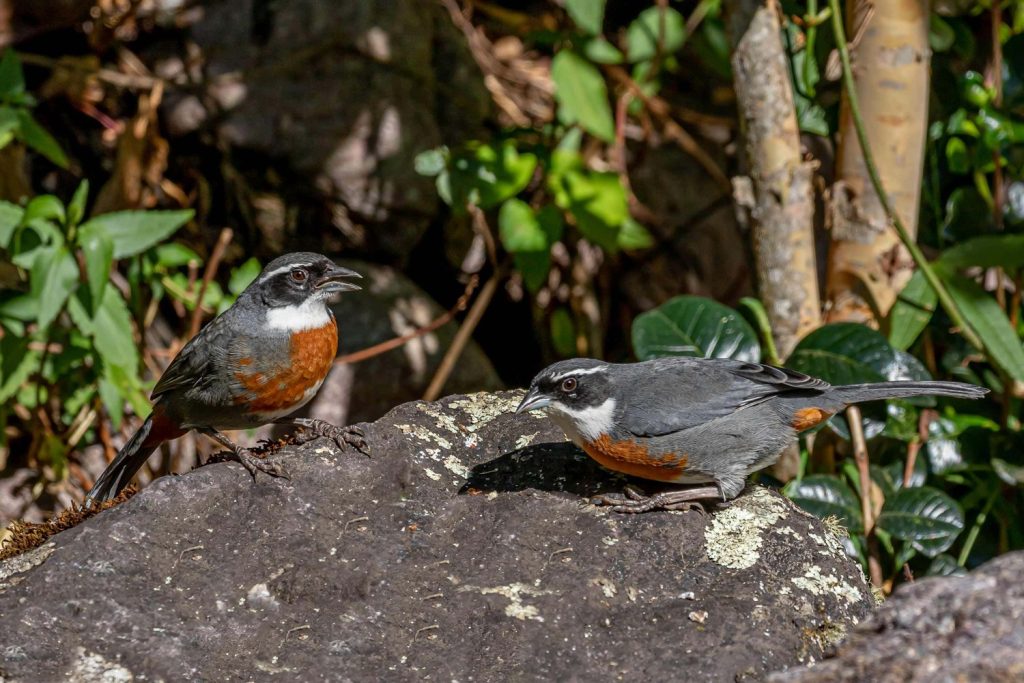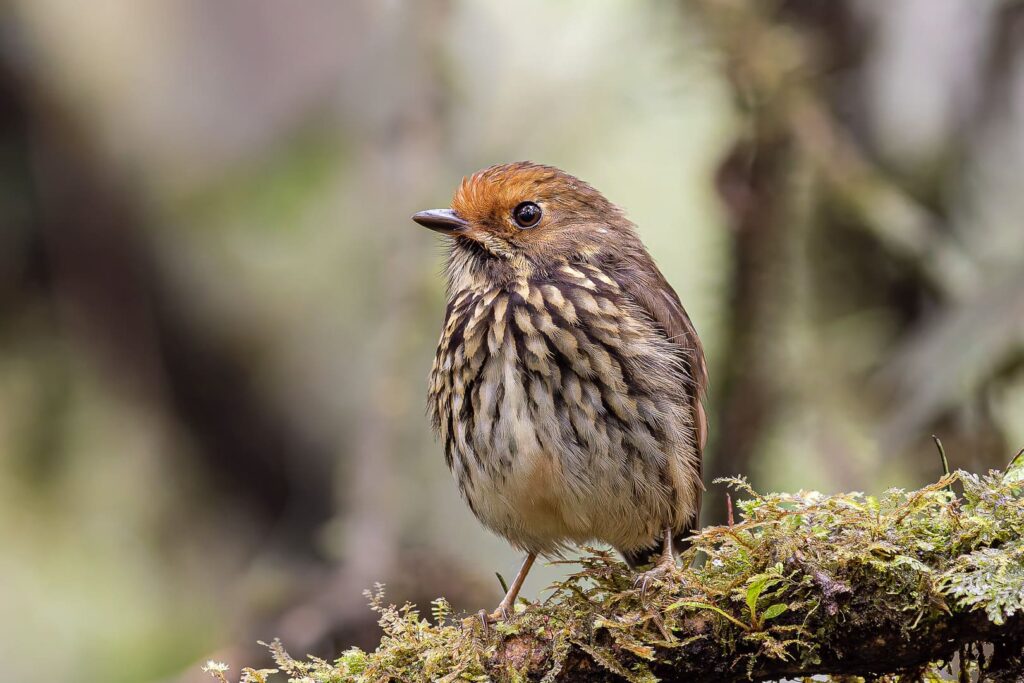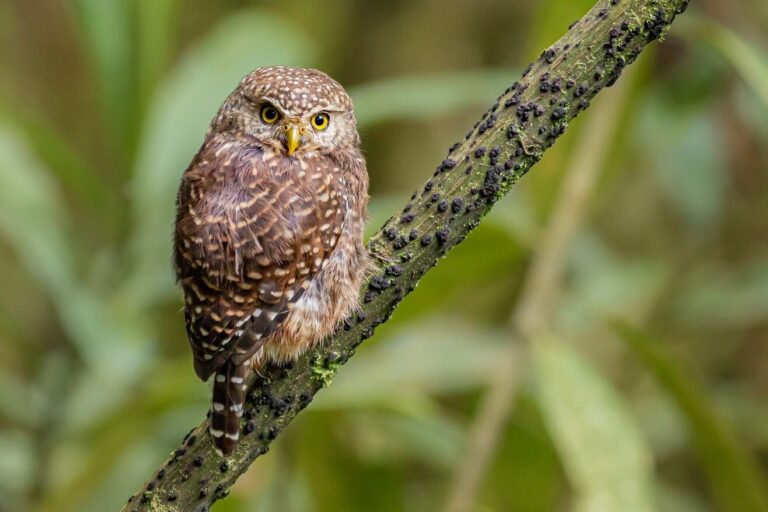Chapter 1: The Evolution of Unidirectional Microphones for Bird and Wildlife Sound Recording
In the world of bird and wildlife sound recording, capturing clear and isolated sounds has always been a challenge. Whether you’re recording the ethereal call of a Peruvian Andean Cock-of-the-rock or the distant song of a rare antpitta deep in the cloud forest, one tool has made this possible: the unidirectional microphone, also known as the shotgun microphone. But how did we get here? This chapter explores the history of unidirectional microphones and why they became essential tools for field recordists, birdwatchers, and wildlife enthusiasts worldwide.
The Early Days of Sound Recording – Capturing Nature’s Voices
In the early 20th century, sound recording technology was primarily focused on studio environments. The bulky and primitive omnidirectional microphones of the time were designed to pick up sound from every direction. While they worked well in controlled settings, they were useless for isolating sounds in noisy outdoor environments.
As nature recording gained popularity in the mid-1900s, particularly in ornithology and wildlife documentaries, there was a growing demand for directional microphones that could focus on specific sounds while rejecting unwanted background noise like wind, water, or distant traffic.
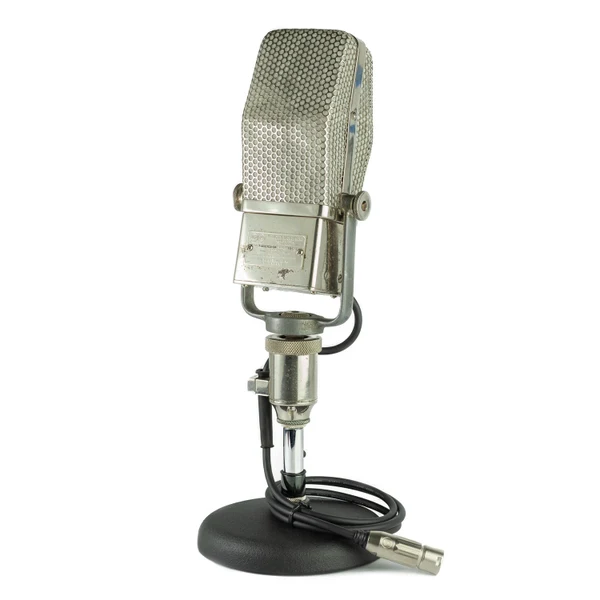
The Birth of Directional and Shotgun Microphones
The concept of directional microphones emerged as a solution. Engineers developed the cardioid and supercardioid microphone patterns, which were more focused on sounds in front of the mic and less sensitive to sounds from the sides and rear. These were huge improvements for field recording.
However, the real game-changer came with the invention of the shotgun microphone in the 1950s. Unlike traditional microphones, shotgun mics use an interference tube to achieve a highly unidirectional pickup pattern, known as lobar directionality. This means they are exceptionally good at isolating distant sounds, making them ideal for recording birds, animals, and even wildlife documentaries.
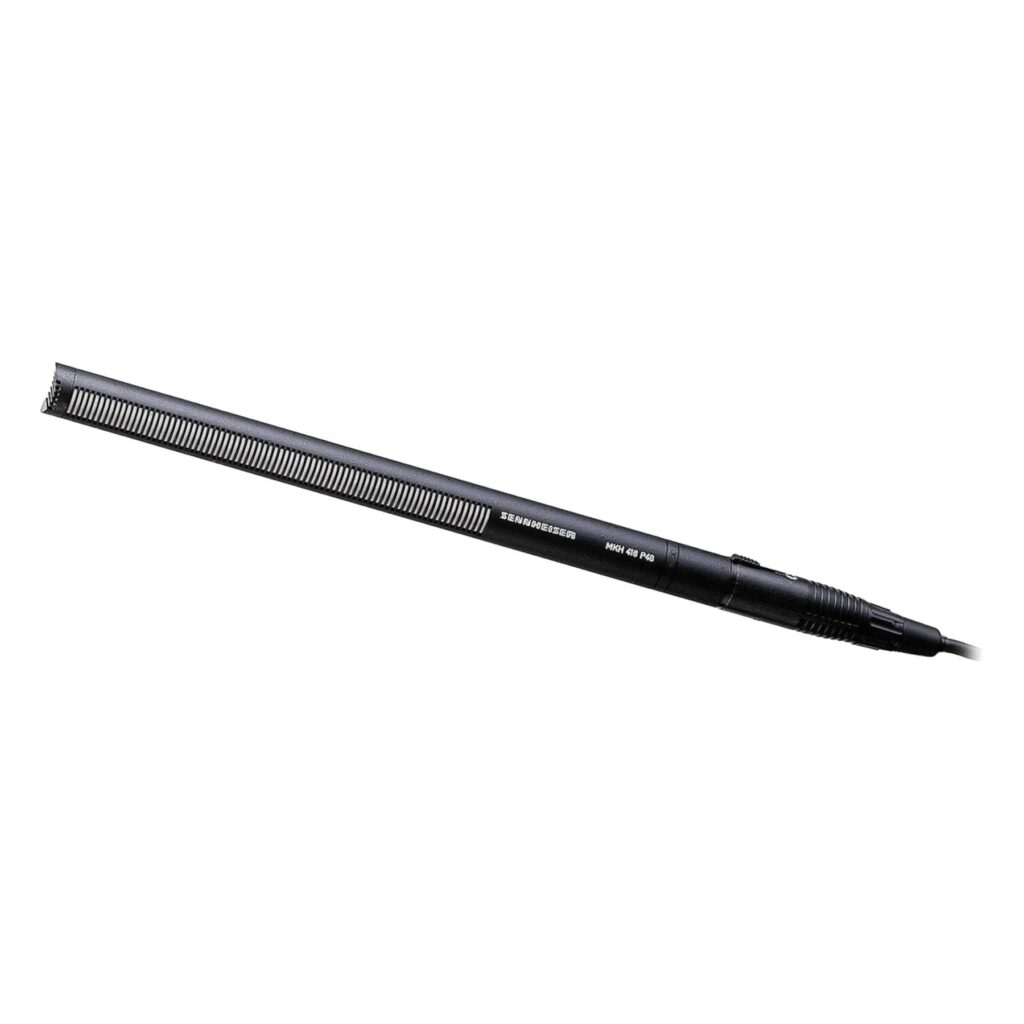
Shotgun Microphones in Bird and Wildlife Recording
By the 1960s and 1970s, shotgun microphones had become the go-to tools for nature sound recordists. Iconic wildlife documentaries from the BBC and National Geographic relied on shotgun mics to capture the calls of exotic birds and the subtle sounds of the wilderness.
For birdwatchers and wildlife photographers, adding sound to their recordings elevated their fieldwork. The shotgun microphone allowed them to document bird calls and animal sounds in their natural habitats with clarity and precision. It also enabled researchers to identify and study species behavior based on their vocalizations.
The Modern Era – Lightweight, Portable, and Affordable Shotgun Microphones
In the past, professional shotgun microphones were expensive, bulky, and required complex setups. But today’s market offers lightweight, affordable, and high-quality shotgun microphones perfect for field recording, even for amateur birdwatchers and hobbyists.
One such microphone is the Sennheiser MKE 600, a modern shotgun mic that has gained popularity among birders and wildlife sound enthusiasts for its directional accuracy, portability, and affordable price point. It brings professional sound quality to anyone interested in bird sound recording without the hefty price tag of high-end models.
Sennheiser MKE 600 – A Shotgun Microphone Designed for the Field
When it comes to field recording equipment for bird calls and wildlife sounds, one of the most popular tools among birdwatchers, wildlife filmmakers, and sound enthusiasts is the Sennheiser MKE 600. It strikes an ideal balance between professional audio quality, portability, and affordability, making it a strong contender for anyone serious about recording nature sounds in the wild.
In this chapter, we’ll introduce you to the Sennheiser MKE 600, explore its design and purpose, and explain why it’s considered one of the best shotgun microphones for bird and wildlife recording at its price point.
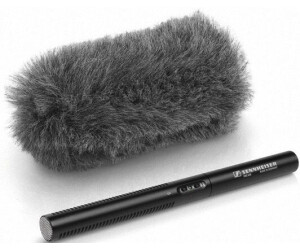
What Is the Sennheiser MKE 600?
The Sennheiser MKE 600 is a supercardioid shotgun microphone designed specifically for directional audio capture. It’s part of Sennheiser’s prosumer line, making it accessible to hobbyists, birders, and professional field recordists alike. Whether you’re out in the Amazon Rainforest recording birdsong or at your local wetlands capturing frog calls, the MKE 600 delivers clear, focused sound with minimal background noise.
Who Is It For?
- Birdwatchers and Ornithologists
Perfect for recording bird calls and vocalizations, whether for research, identification, or personal enjoyment. - Wildlife Documentarians
Ideal for capturing animal sounds in their natural habitats. - Field Recordists and Sound Designers
Great for those needing clean audio samples of nature for libraries or film soundtracks. - Nature Tour Guides
Useful as an educational tool to bring the sounds of Peruvian wildlife to life for tourists.
Why the Sennheiser MKE 600 Stands Out for Bird and Wildlife Recording
The MKE 600 offers several features that make it well-suited for outdoor sound recording in challenging field conditions, such as rainforests, cloud forests, and open wetlands—all common in Peru’s diverse birding destinations.
✅ Supercardioid/Lobar Pickup Pattern
One of the key features of the MKE 600 is its highly directional pickup pattern, known as supercardioid (or lobar). This means it focuses on sounds directly in front of the mic while rejecting noise from the sides and rear.
➡️ Why it matters for birders: You can record a single bird’s song from a distance without capturing too much ambient noise like wind or other animals.
✅ Low Self-Noise (15dB)
The MKE 600 has an impressively low self-noise level, making it possible to record quiet bird calls and subtle wildlife sounds without an intrusive hiss.
➡️ Why it matters for field recording: Some of the most interesting birds—such as antpittas or tinamous—have soft, delicate vocalizations that require a quiet microphone to capture them accurately.
✅ Battery or Phantom Power Operation
The MKE 600 offers two power options:
- AA Battery (Up to 150 Hours)
- 48V Phantom Power (via XLR connection)
➡️ Why it matters for bird sound recordists: If you’re in remote areas without easy access to power, the battery option is a huge advantage. You don’t need to bring extra phantom power devices—just pack an extra AA battery!
✅ Rugged and Lightweight Design
Weighing just 128g (without battery) and measuring 256mm long, the MKE 600 is easy to handle during long birding walks or hikes in difficult terrain. It’s built with robust metal housing, offering durability and weather resistance for use in the Amazon rainforest, Andean cloud forest, or coastal marshes.
➡️ Field use example: Hike to Manu National Park, and you’ll appreciate a lightweight shotgun mic that fits easily into your gear bag without adding bulk.
✅ Built-In Low-Cut Filter
The low-cut filter reduces low-frequency noise, such as wind rumble, footsteps, or handling noise.
➡️ Perfect for windy days in open grasslands or mountain ridges, where wind noise can ruin a good bird recording.
What’s Included with the Sennheiser MKE 600?
- Foam Windscreen (Helps reduce basic wind noise)
- Shock-Mount Mic Holder
- XLR to 3.5mm Adapter Cable (For DSLR or portable recorders)
- Optional accessories like furry windshields (deadcats) are recommended for outdoor birding recordings.

Key Takeaways: Why Birders and Wildlife Recordists Choose the Sennheiser MKE 600
- Directional accuracy perfect for distant bird calls
- Low self-noise makes it ideal for quiet environments
- Portable and durable for remote field expeditions
- Flexible power options for off-the-grid birding tours
- Affordable price point without compromising sound quality
Key Features of the Sennheiser MKE 600 for Birders and Wildlife Sound Recordists
If you’re looking for a shotgun microphone that balances affordability, portability, and professional sound quality, the Sennheiser MKE 600 deserves serious consideration. In this chapter, we’ll take a closer look at the technical specifications and field-friendly features that make it one of the best microphones for bird sound recording and wildlife audio capture—especially in challenging outdoor environments like the rainforests and highlands of Peru.
✅ 1. Supercardioid / Lobar Polar Pattern – Precision Directionality
One of the most important features for bird and wildlife recording is directionality. The Sennheiser MKE 600 uses a supercardioid/lobar pickup pattern, which tightly focuses on sound sources directly in front of the mic while rejecting noise from the sides and rear.
Why It Matters in the Field:
- Capture the isolated song of a rare bird, even from a distance.
- Reduce ambient noise like wind, insects, and other animals.
- Ideal for dense habitats, like cloud forests, where background sounds are constant
✅ 2. Low Self-Noise – Quiet Recordings for Delicate Birdsong
The self-noise rating of a microphone is crucial when recording soft bird calls or subtle wildlife sounds. The Sennheiser MKE 600 offers an impressive self-noise level of 15 dB (A-weighted).
Why It Matters for Birdwatchers and Wildlife Recordists:
- Allows for recording quiet birds, like antpittas and tinamous, without a hiss in the background.
- Helps produce clean, professional-quality audio, even with quiet species.
- Essential for sound libraries and scientific studies where clarity is critical.
✅ 3. Wide Frequency Response – Capture the Full Range of Bird and Animal Sounds
The frequency response of the MKE 600 ranges from 40 Hz to 20,000 Hz, ensuring accurate capture of both low rumbles and high-pitched bird calls.
➡️ Why It Matters in the Field:
- Capture the high-frequency songs of hummingbirds, tanagers, and flycatchers.
- Don’t miss the low-end sounds of howler monkeys, jaguars, or ground-dwelling birds like curassows.
- Provides natural and balanced audio without harshness or artificial coloration.
✅ 4. Built-In Low-Cut Filter – Cut Out Unwanted Low Frequencies
The low-cut (high-pass) filter built into the MKE 600 helps reduce low-frequency noise below 100 Hz, such as wind rumble, traffic, or handling noise.
Why It Matters in the Field:
- Minimizes wind noise, common in open habitats and high-altitude areas like Cusco and the Sacred Valley.
- Reduces footsteps, clothing rustles, and recorder handling sounds.
- Essential when recording bird calls in windy environments, such as mountain passes.
✅ 5. Dual Power Options – Battery and Phantom Power Flexibility
The MKE 600 can be powered by either:
- A standard AA battery (lasting up to 150 hours)
- 48V phantom power, typically supplied by field recorders or audio interfaces
Why It Matters for Remote Birdwatching Expeditions:
- Reliable battery power when you’re deep in remote jungles or mountainous regions with no access to phantom power.
- Seamless phantom power compatibility for professional setups using devices like the Zoom F3 or Sound Devices recorders.
- Ensures flexibility and reliability no matter where you are.
✅ 6. Lightweight and Rugged Design – Field-Ready Build Quality
Weighing only 128g (without battery) and crafted with robust metal housing, the Sennheiser MKE 600 is built for harsh field conditions.
Why It Matters for Birding and Wildlife Tours in Peru:
- Lightweight enough for long hikes through Manu National Park, Tambopata, or the Amazon Basin.
- Durable construction withstands humidity, dust, and rough handling.
- Compact size makes it easy to pack and carry on birding tours and photography expeditions.
✅ 7. Compatibility with Multiple Devices – Versatile Connectivity
The MKE 600 comes with:
- XLR output for professional recorders
- TRS adapter cable for DSLR cameras, mirrorless cameras, and portable recorders
Why It Matters for Field Recording:
- Plug directly into Zoom F3, MixPre, or professional interfaces for studio-quality recordings in the wild.
- Compatible with cameras for video birding and nature documentaries.
- Easy integration into any birdwatching or wildlife recording setup.
✅ 8. Optional Accessories for Improved Outdoor Performance
While the MKE 600 includes a foam windscreen, we recommend adding:
- Furry windshield (deadcat) for high-wind environments
- Shock mounts for handheld or boom pole use
- Blimps and windjammers for extreme conditions
Why It Matters:
- These accessories further reduce wind noise and handling vibrations, ensuring clean bird and wildlife audio even in harsh environments.
Field Performance – Recording Birds and Wildlife with the Sennheiser MKE 600
In bird and wildlife sound recording, what truly matters is how your equipment performs in real-world conditions. The Sennheiser MKE 600 has gained a solid reputation among birdwatchers, nature sound recordists, and wildlife filmmakers for its reliable performance in the field. Whether you are recording delicate bird songs in the Amazon rainforest or capturing distant animal calls in high-altitude grasslands, the MKE 600 proves to be an effective and versatile shotgun microphone.
In this chapter, we’ll explore how the Sennheiser MKE 600 performs in different environments and highlight its strengths and limitations when used for bird and wildlife recording.
First Impressions in the Field
The first thing you’ll notice when taking the MKE 600 out for a recording session is how lightweight and compact it is. Weighing just 128 grams (without battery) and measuring 256 millimeters in length, it’s a practical companion for fieldwork. Whether you’re trekking through dense jungle or climbing into cloud forests, carrying and handling the MKE 600 won’t slow you down. It mounts easily onto a boom pole, tripod, or handheld grip, making it suitable for both stationary and mobile recordings.
On a recent trip to Tambopata National Reserve in southeastern Peru, I spent hours recording the dawn chorus of parrots and macaws. The MKE 600’s balance and size made it easy to reposition quickly without fatigue, a major advantage when waiting for just the right call.
Directionality and Isolation in the Wild
The MKE 600’s supercardioid/lobar polar pattern excels at isolating the sounds you want to capture. It focuses tightly on the subject in front of the mic and does a great job rejecting ambient noise from the sides and rear. In busy natural environments, this precision can make the difference between a clear bird call and a recording filled with distracting background sounds.
In Manu National Park, I aimed the MKE 600 at a Screaming Piha perched high in the canopy, about 20 meters away. The result was a clean, isolated recording of its call, with only faint traces of the surrounding insect noise and distant river sounds. This kind of directionality makes it a dependable choice for both birds and wildlife in noisy environments.
Low Self-Noise and Recording Subtle Sounds
For birders and wildlife sound recordists, a microphone’s self-noise is a critical factor. The MKE 600’s low self-noise rating of 15dB (A-weighted) ensures that quiet calls can be captured without adding unwanted hiss or static to the recording.
While recording an Undulated Antpitta in the cloud forests of Abra Malaga Pass, I was impressed by the MKE 600’s ability to pick up the soft, low-pitched song with clarity. The recording remained clean and required very little noise reduction in post-production. This makes it an excellent microphone for species with delicate vocalizations.
Handling Wind, Weather, and Outdoor Challenges
Recording in the wild often means dealing with unpredictable weather. The MKE 600, combined with its included foam windscreen, provides basic protection against wind noise. However, in windy locations like Colca Canyon, using a high-quality furry windscreen (deadcat) significantly improved the audio quality by cutting down on rumble and wind interference.
In humid environments like the Amazon rainforest, the MKE 600 performed well, though care was taken to avoid heavy downpours. While it’s durable, it isn’t fully waterproof, so additional weather protection is recommended when recording in extreme conditions.
Power Flexibility for Remote Locations
One of the standout features of the Sennheiser MKE 600 is its ability to run on a single AA battery or phantom power. This dual power option makes it especially useful in remote areas where carrying additional gear isn’t always practical.
During multi-day birding trips in Manu Biosphere Reserve, I relied on battery power without issue. A single AA battery lasted for several days of intermittent recording, ensuring I didn’t have to worry about recharging or carrying additional power sources.
Versatility with Recorders and Cameras
The MKE 600 is compatible with professional field recorders and cameras, adding versatility to any recording setup. I typically pair it with my Zoom F3 recorder for pristine audio files but have also mounted it on a Sony mirrorless camera for video documentation of bird behaviors.
For example, while recording a Crested Quetzal in the cloud forests near Cusco, I captured both high-quality audio through the F3 and video through my camera, all in a single, lightweight setup. This makes the MKE 600 a valuable tool for nature guides, filmmakers, and wildlife researchers.
Limitations and Considerations in the Field
While the Sennheiser MKE 600 offers excellent performance for its class, it’s important to be aware of its limitations. It doesn’t match the extreme long-distance focus of a parabolic microphone and isn’t designed for use in heavy rain without additional protection.
For recordists who need ultra-focused audio from great distances—such as recording elusive species in wide-open areas—a parabolic setup or a higher-end shotgun mic like the Sennheiser MKH 416 may be worth considering. However, for most field scenarios, the MKE 600 strikes an excellent balance between portability, quality, and price.
Field Recording Highlights from Peru
| Location | Subject | Performance Overview |
|---|---|---|
| Manu National Park | Screaming Piha | Clear, focused call recording at 20m distance |
| Tambopata Reserve | Macaw Clay Lick | Isolated calls despite background noise and wind |
| Abra Malaga Cloud Forest | Undulated Antpitta | Clean capture of soft vocalizations |
| Colca Canyon | Giant Hummingbird | Effective wind handling with added windjammer |
Comparing the Sennheiser MKE 600 with the Rode NTG4+ and the Sennheiser MKH 416 – Which Shotgun Mic is Right for Bird and Wildlife Recording?
Choosing the right shotgun microphone for bird sound recording or wildlife audio depends on your budget, recording conditions, and expectations for audio quality. In this chapter, we’ll compare the Sennheiser MKE 600 with two popular alternatives: the Rode NTG4+, which is in a similar price range, and the Sennheiser MKH 416, a professional-grade shotgun microphone that comes with a much higher price tag.
By the end of this comparison, you’ll have a better sense of which mic best suits your field recording needs, whether you’re documenting the dawn chorus in the Amazon or searching for elusive species in the Andean cloud forests.

✅ Sennheiser MKE 600 vs Rode NTG4+ – Which Mid-Range Shotgun Mic Should You Choose?
Both the MKE 600 and the Rode NTG4+ are affordable shotgun microphones aimed at prosumers, filmmakers, and nature sound recordists on a budget. They offer good directionality, clean sound, and flexible power options, making them excellent choices for field recording in birding and wildlife contexts.
➤ Sound Quality
- MKE 600: Has a natural, balanced sound with a slightly warmer tone. It performs very well in outdoor field recordings, capturing bird calls and wildlife sounds without harshness.
- NTG4+: Offers a brighter sound profile, which can enhance clarity for speech but may sound a bit harsh when recording high-pitched bird calls. It features digital switching for EQ and high-pass filtering, which adds versatility.
➤ Self-Noise
- MKE 600: 15dB (A-weighted). Very low noise for its price, making it ideal for quiet birds and ambient wildlife sounds.
- NTG4+: 16dB (A-weighted). Slightly higher noise floor, which isn’t a problem for louder sounds, but less ideal when capturing quiet vocalizations in nature.
➤ Power Options
- MKE 600: Runs on AA battery (up to 150 hours) or phantom power.
- NTG4+: Internal rechargeable lithium battery (up to 150 hours) or phantom power. Rechargeable convenience is a plus, but you’ll need a power source to top it up.
➤ Build Quality and Size
- MKE 600: Solid metal body, weighs 128g. Very rugged, designed for outdoor use.
- NTG4+: Also has a durable metal housing, weighs slightly less at 126g, but is more sensitive to moisture and may not perform as well in humid conditions.
➤ Price Range
- MKE 600: Typically ranges between $300–$350. Often bundled with accessories useful for field recording.
- NTG4+: Priced around $350–$400, slightly more expensive depending on region and retailer.
➤ In the Field
For birdwatchers and wildlife recordists, the MKE 600 often delivers more natural-sounding recordings, particularly for birds with complex vocalizations. The NTG4+ may appeal more to those who also use their mic for voiceovers or filmmaking due to its brightness and digital controls.
➤ Conclusion
If your focus is bird and wildlife sound recording, the Sennheiser MKE 600 offers better directionality, lower noise, and reliability in varied environments. The Rode NTG4+ is a versatile alternative but may not offer the same subtlety for quiet nature sounds.
✅ Sennheiser MKE 600 vs Sennheiser MKH 416 – Is the Price Difference Justified for Bird and Wildlife Recording?
The Sennheiser MKH 416 is considered a legend in the world of professional shotgun microphones. It’s used extensively in film production, broadcasting, and by serious nature sound recordists. But at more than double the price of the MKE 600, is it worth it for bird and wildlife recording?
➤ Sound Quality
- MKE 600: Very good for its price—clean, natural, and accurate for field recordings.
- MKH 416: Extremely detailed, with high sensitivity and ultra-low self-noise. It captures more nuance, particularly in quiet or complex soundscapes, making it ideal for professional wildlife audio and high-end documentaries.
➤ Self-Noise
- MKE 600: 15dB (A-weighted).
- MKH 416: 13dB (A-weighted), one of the quietest in its class. This difference matters for high-fidelity recording of subtle bird calls, especially in post-production when boosting quiet sections.
➤ Build Quality and Durability
- MKE 600: Very solid, moisture-resistant, and rugged enough for field recording.
- MKH 416: Built to broadcast standards, with RF-condenser technology, making it extremely resistant to humidity and adverse weather—ideal for rainforests and cloud forests.
➤ Power
- MKE 600: Battery (AA) or phantom power.
- MKH 416: Requires phantom power (no battery option). This limits its use in remote locations unless you have a phantom power source.
➤ Price Range
- MKE 600: $300–$350.
- MKH 416: $1,000–$1,200. It’s a significant investment, typically made by professionals.
➤ In the Field
The MKH 416 delivers broadcast-quality recordings even in challenging environments. It’s noticeably better in moist, humid conditions like the Amazon or high-altitude cloud forests. Its RF circuitry makes it less prone to moisture issues, which can affect traditional condenser mics like the MKE 600.
That said, for most birders, nature tour operators, and hobbyist field recordists, the MKE 600 already delivers excellent quality without requiring a four-figure investment.
➤ Conclusion
The MKH 416 is an industry standard for a reason, but the MKE 600 offers incredible value and quality for bird and wildlife field recording, particularly for those not working in professional film production or broadcasting.
✅ Summary of the Comparisons
| Feature | MKE 600 | Rode NTG4+ | MKH 416 |
|---|---|---|---|
| Price | $300–$350 | $350–$400 | $1,000–$1,200 |
| Self-Noise | 15dB (A-weighted) | 16dB (A-weighted) | 13dB (A-weighted) |
| Sound Quality | Natural and balanced | Bright and crisp | Ultra-detailed and clean |
| Power Options | Battery or Phantom | Rechargeable or Phantom | Phantom only |
| Build Quality | Rugged, weather-resistant | Durable but less moisture-resistant | Broadcast-level durability |
| Best For | Birders, wildlife recordists, nature tours | Voice, video, and general purpose | Professional wildlife recordists, filmmakers |
| Portability | Excellent | Excellent | Very good (requires phantom) |
Shotgun Microphone vs. Parabolic Microphone – Which Is Better for Bird and Wildlife Recording?
When it comes to recording birdsong or wildlife sounds in the field, one of the most common questions is whether to use a shotgun microphone or a parabolic microphone. Both tools are designed to capture distant sounds with clarity, but they serve different purposes and excel in different scenarios.
In this chapter, we’ll compare shotgun microphones, like the Sennheiser MKE 600, and parabolic microphones, often favored by professional wildlife recordists. We’ll look at how they work, their pros and cons, and help you decide which tool is best for your bird and wildlife recording needs.
✅ How Shotgun and Parabolic Microphones Work
➤ Shotgun Microphones
Shotgun microphones use an interference tube design with a supercardioid or lobar polar pattern. This construction allows them to focus on sound coming from the front of the microphone while rejecting sound from the sides and rear.
- Example: Sennheiser MKE 600, Rode NTG4+, MKH 416
➤ Parabolic Microphones
Parabolic microphones use a dish-shaped reflector to collect sound waves and focus them onto a microphone element at the focal point. This design gives them extreme directionality and amplification of distant sounds.
- Example: Telinga Universal MK2, Wildtronics Parabolic Microphone
✅ Directionality and Range
➤ Shotgun Microphones
- Directionality: Excellent focus on sounds in front of the mic.
- Range: Effective for moderate distances (up to 20-30 meters for louder bird calls).
- Best For: Medium-distance subjects, ambience, and natural soundscapes where some background is desirable.
➤ Parabolic Microphones
- Directionality: Extremely focused, almost like using a telephoto lens for sound.
- Range: Can pick up quiet bird calls from long distances, sometimes over 100 meters, depending on the dish size and environment.
- Best For: Recording individual birds at long range, especially in open environments.
✅ Sound Quality and Frequency Response
➤ Shotgun Microphones
- Frequency Range: Wide and natural. Captures full-spectrum sound, from low rumbles to high-pitched calls.
- Sound Quality: Natural and realistic, with spatial ambience intact.
- Limitation: Less effective for isolating very distant, quiet sounds without picking up background noise.
➤ Parabolic Microphones
- Frequency Range: More limited, especially at low frequencies due to the design of the parabolic reflector.
- Sound Quality: Highly focused on high frequencies. Can make recordings sound narrow or less natural.
- Limitation: Not suitable for low-frequency animal sounds (e.g., frog choruses, howler monkeys).
✅ Portability and Practical Use in the Field
➤ Shotgun Microphones
- Size: Compact and easy to carry. Fits in a backpack or mounts on a camera rig.
- Weight: Lightweight, ideal for long hikes and remote birding trips.
- Setup Time: Minimal. Plug into your recorder, aim, and record.
- Versatility: Great for general field recording, including ambient sounds, dialogue, and soundscapes.
➤ Parabolic Microphones
- Size: Bulky. The dish (typically 50cm or larger) makes it awkward to transport.
- Weight: Heavier and more cumbersome.
- Setup Time: Longer. Requires careful aiming and sometimes a tripod for stability.
- Versatility: Specialized for long-distance targeting, not ideal for ambient or general nature recording.
✅ Use Case Scenarios
➤ When to Use a Shotgun Microphone
- Recording multiple bird species during a dawn chorus.
- Capturing natural soundscapes with context and spatial depth.
- Hiking and field trips where portability matters.
- Recording birds or wildlife at close to moderate distances (10-30 meters).
➤ When to Use a Parabolic Microphone
- Isolating the call of a single bird species from long distances (50+ meters).
- Recording shy, rare, or distant birds in open fields or wetlands.
- Scientific purposes where clean isolation of individual vocalizations is required.
- Stationary recording setups where carrying large equipment isn’t an issue.
✅ Pros and Cons
| Feature | Shotgun Microphone | Parabolic Microphone |
|---|---|---|
| Range | Moderate (10-30m) | Long distance (50-100m+) |
| Sound Quality | Natural, full-spectrum | Focused, strong highs, limited lows |
| Portability | Lightweight and compact | Bulky and harder to transport |
| Versatility | Great for birds, wildlife, and ambience | Specialized for distant birds and calls |
| Ease of Use | Simple, quick setup | Requires careful positioning and aiming |
| Best Use | Birding tours, soundscapes, fieldwork | Research, surveys, documenting specific calls |
✅ Which One Should You Choose?
➤ Shotgun Microphone :
- Ideal for birders and wildlife sound enthusiasts who want general-purpose flexibility.
- Best if you want high-quality, natural recordings of birds and wildlife at reasonable distances.
- Suitable for field guides, tour leaders, and content creators who value portability and ease of use.
➤ Parabolic Microphone:
- A specialized tool for scientific research, species documentation, or professional wildlife recording focused on specific subjects at long range.
- Recommended for stationary setups or dedicated recording sessions, not for casual birding trips.
Is the Sennheiser MKE 600 the Right Microphone for Your Bird and Wildlife Recording Needs?
Choosing the right microphone for birdwatching and wildlife sound recording can be overwhelming, especially with so many models on the market. After exploring its features, field performance, and comparisons with other microphones, it’s time to answer the most important question:
Is the Sennheiser MKE 600 the right choice for you?
In this chapter, we’ll break down the pros, cons, and ideal user profiles for the MKE 600, helping you make an informed decision.
✅ Who Is the Sennheiser MKE 600 For?
The Sennheiser MKE 600 is ideal for:
- Birdwatchers looking to record bird calls and songs in a variety of environments, from rainforests to highland grasslands.
- Wildlife sound recordists who need a reliable shotgun mic for capturing animal sounds on field expeditions.
- Nature tour guides who want to document wildlife encounters for their groups or for educational purposes.
- Content creators producing birding videos, wildlife documentaries, or audio guides.
- Researchers and students who need an affordable but high-quality microphone for fieldwork and species monitoring.
✅ What Makes the Sennheiser MKE 600 a Good Choice?
➤ 1. Directional Accuracy
- Excellent supercardioid/lobar polar pattern for isolating bird calls and reducing unwanted background noise.
➤ 2. Low Self-Noise
- Low self-noise (15 dB A-weighted) makes it suitable for recording quiet species and delicate vocalizations.
➤ 3. Dual Power Options
- Flexibility to use either phantom power or AA battery, perfect for remote birding locations where power sources may be limited.
➤ 4. Rugged, Lightweight Design
- Lightweight and built for the outdoors, the MKE 600 can withstand the challenges of fieldwork in Peru, from Amazon humidity to Andean winds.
➤ 5. Affordability
- Offers professional-grade audio at an accessible price point (typically around $300–$350), making it a solid investment for enthusiasts and semi-professionals.
✅ When the MKE 600 Might Not Be Enough
While the MKE 600 is versatile, there are scenarios where you might need to look beyond this mic:
- You need to record ultra-distant bird calls in open habitats (e.g., wetlands or plains). In this case, a parabolic microphone may be a better fit.
- You are producing broadcast-quality documentaries or professional wildlife films requiring the highest possible audio quality. The Sennheiser MKH 416 or MKH 8060 might be worth the higher price.
- You work frequently in heavy rain or high-humidity environments and need a mic with advanced weatherproofing, like the MKH series.
✅ Pros and Cons of the Sennheiser MKE 600 for Bird and Wildlife Recording
| Pros | Cons |
|---|---|
| Excellent directionality for isolating sounds | Less effective than parabolic mics at extreme distances |
| Low self-noise for quiet species | Not fully waterproof (requires additional protection in rain) |
| Dual power options (Battery + Phantom) | Lacks RF-condensers found in high-end shotgun mics |
| Rugged and lightweight for the field | Limited low-frequency range compared to larger shotgun mics |
| Great price-to-performance ratio | No built-in digital controls (like the Rode NTG4+) |
| Works with recorders and cameras | Requires a windshield upgrade for harsh wind conditions |
✅ Practical Scenarios: Should You Buy the MKE 600?
➤ Scenario 1: You’re a Birdwatcher Recording Calls in Peru
- You’re traveling light, visiting locations like Manu National Park or the Sacred Valley, and you want to record birds during your trip.
✅ The MKE 600 is lightweight, affordable, and produces great audio quality, making it a perfect choice.
➤ Scenario 2: You’re a Wildlife Guide Creating Tour Content or Doing playback
- You want to record wildlife sounds and narration for your guests or social media.
✅ The MKE 600 easily mounts on your camera and works with portable recorders. Its versatility makes it ideal for this role.
➤ Scenario 3: You’re a Professional Filmmaker Documenting Rare Species
- You need high-fidelity sound for a broadcast wildlife documentary.
⛔ Consider investing in the MKH 416 or MKH 8060, especially if you’re working in high humidity or challenging conditions.
Final Words: Is the Sennheiser MKE 600 Worth It?
If you’re a birder, field recordist, or wildlife enthusiast seeking a reliable, affordable, and high-quality shotgun microphone, the Sennheiser MKE 600 is one of the best choices in its class.
Its excellent directionality, low self-noise, and rugged design make it ideal for recording bird songs, animal calls, and ambient nature sounds in field conditions. For the price, it’s hard to beat—especially if you’re not yet ready to invest in high-end professional gear.
For many birdwatchers, tour guides, and nature sound recordists, the MKE 600 offers the perfect balance between performance and portability, delivering great audio results without breaking the bank.





